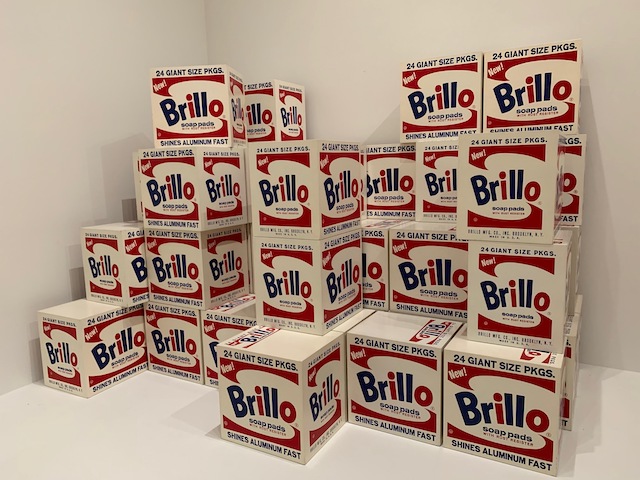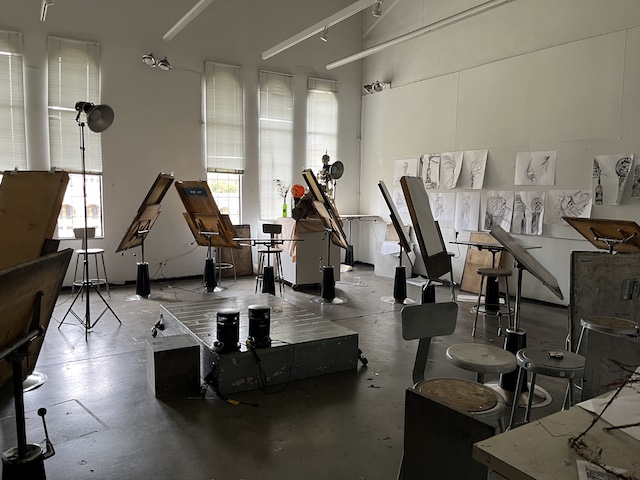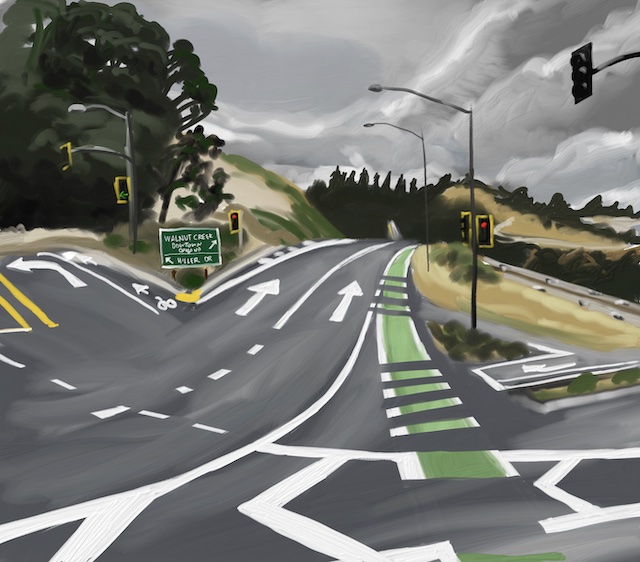Artworks as Experiments
“You learn by doing,” they say; you can’t learn skills from theory alone. Experimentation is how we learn about the world, both individually and as a society.
This post is about how artworks often function as experiments, akin to scientific experiments. I’ll start with a bit of background on how experiments function in science, and then describe some different ways that artworks can function as experiments. Some artworks are personal experiments, including lessons in art class, akin to the experiments in science class. Some artworks change the way society understands art; we still discuss these works today, just as we discuss key historical scientific experiments.
All of these experiments are, in a way, working toward the same questions: What is art? How do specific styles and techniques function? How do we appreciate them and what is their role in society. A successful experiment teaches us something about these questions, even if in some small way. Artworks do not need to do this, but often the most significant do.
Experimentation in science
In the sciences, experimentation is how we test and develop theories. We observe things in the world, gather data, form theories from the data, and run experiments that test the theories. As students, we run experiments in science classes to learn scientific principles first-hand, and also to learn about experimentation. In scientific research, doing experiments where theory is uncertain often leads to new insights, either confirming the theory, or finding surprising anomalies. In the words of Isaac Asimov, “The most exciting phrase to hear in science, the one that heralds new discoveries, is not “Eureka!” but ‘That’s funny …’”
For example, in my own work, when I proposed a theory of how line drawings work in human perception, I began with a hunch, based on experience with line drawing algorithms, together with some knowledge of theoretical neuroscience. In formulating my own theory, I picked through many published papers with different experiments, evaluating which ones seemed relevant and which ones were not, or were poorly run, and ran a few of my own new experiments, and organized them in support of my theory. All this past experimentation was crucial. I’ve proposed new experiments guided by my theory: running these experiments could support my theory, they could show that it’s totally off-base, or they could be confusing. I highly doubt anyone would think to run these experiments without the theory (it’s unclear that anyone will anyway).
Experimentation is messy and confusing, and only theory makes it make sense. Foucault thought to swing a pendulum only because he wanted to test the theory of Earth’s rotation; the motion of the pendulum would have seemed entirely bizarre to anyone that believed in a flat Earth.
In the Art World
Now let’s shift focus to the art world: artworks involved in our culture’s understanding of art, of what art is and how it works.
When we talk about art, we talk about examples of artworks. Any reasonable discussion, whether of the “definition of art” or trends in the artworld from last year or your preferences about your favorite kinds of art, needs to talk about specific cases, or else it gets vague and muddy
When talking about theories, these specific experiments are the evidence, the raw data with which to explain, devise, and test our theories. This doesn’t necessarily apply to most artwork—really, it’s relevant to only a tiny tiny fraction—but those examples play a huge role.
Conceptual Art
In Conceptual Art, artworks sometimes function primarily as “experiments.” This is why we talk so much about Marcel Duchamp’s “Fountain”. We don’t care about its aesthetics or emotional content, we care about the fact that it’s widely accepted as an important artwork. This fact is a direct, effective response to anyone that claims that “art is about emotional expression” or “art is about communicative intent.” It’s a piece of evidence that any theory of art needs to somehow account for, even if by claiming it’s not really art.
In 1964, the art critic and philosopher Arthur Danto saw Andy Warhol’s “Brillo Boxes” at an exhibition. The work comprises precise copies of commercial packing. Throughtout the rest of his career, Danto wrote about how this exhibition shook his idea of art; they drove him to try to solve the problem of how these could be called art whereas actual Brillo packaging would not be. In response to these Brillo Boxes, he devised the institutional theory of art, which, in some form, remains the preeminent “definition of art” today, despite its shortcomings. In contrast, Andy Warhol didn’t seem to have much of a theory behind them, he was just making art.
His theory was provoked by trying to explain the real artworks that someone had made. If someone in 1964 had just done the thought experiment (“suppose Andy Warhol put Brillo Boxes in a gallery, would that be art?”), it wouldn’t have had the same value as actually doing it, and seeing it really be appreciated as art.
Sol LeWitt created wall paintings, but he was really an early conceptual artist, and his artworks and his theory went hand-in-hand. He wrote instructions on how to make his murals, and then other people would actually make the paintings from his instructions. You can buy a new Sol LeWitt from another owner, and having workers from his estate paint over one painting and paint a new one at your location. In 1967, Sol LeWitt wrote his “paragraphs on conceptual art”, devising a theory of “conceptual art,” a term he coined. This theory of art-as-ideas became central to the Contemporary notion of art.

“AI” Art: What is it to make art with technology?
It’s not just about the “definition of art.” These experiments test all sorts of things about what it means to make art, how do we appreciate it, how does it function, how do we judge it?
“AI” art presents a wonderful case in point: we live at a time right now when no one really knows exactly how this art functions; artists are experimenting with it, playing with it, and the technology is evolving in parallel to these experiments.
Imagine writing a computer program that makes beautiful pictures. What would that mean? The natural, obvious conclusion is that this means that the computer is an artist. Many of us have thought this at some time, and some people still seem to think this.
However, once you actually try it, then, typically, you no longer believe it. There’s something unsatisfying about it… something about the computer program doesn’t feel like it should count as an artist. We now have lots of examples of computer algorithms that make great pictures. From this experiment, and this general experiences, it’s then the job of theory to try to understand this and refine our notion of what it means to be an artist (which is something I’ve tried to do).
But it’s much more than just that one question. I think a lot of people are starting to recognize some of the harm in saying that our algorithms are artists on their own. But there are still a lot of deeper questions, just as there are around any new art tool or movement. Does “AI art” have a style? What does the artist do? How do we appreciate it; which works are significant and interesting, and why? How will it function and change society? What are the benefits and harms? How will it evolve in the future, what new technology can be built to support “AI” artists, and how will it change art in turn? Will “AI art” make us rethink what it is an artist does, the same way photography did 100 years ago?
We can think about these questions all we want in the abstract, but it’s the actual, real works made by artists that ultimately make these discussions real, to inform our theories of how “AI” art works, and how it affects our understanding of art in general. It’s not one individual work that will do this, but the collective experience of entirely communities, even though any future histories might isolate individual artworks as worth remembering.
Personal experience: Learning from doing
Just as you repeat basic experiments in science class, you repeat basic experiments in art class. What happens when you focus only on negative space? What happens if you force yourself not to lift your pencil? What happens if you paint only in monochrome? What happens if you paint from a photograph or magazine cutouts? What happens if you try to paint those flowers with just two pastel colors?
When I studied art in college, I was often really confused. I had no theory beyond trying to make nice pictures. I knew there was more to being an artist but I didn’t know what. I mostly just focused on what I enjoyed in drawing and painting, and trying to follow my instructors’ feedback, but I never seriously considered following my art degree after college. Only now, years later, do I feel like I have more of a theory of what it is and what I’m doing when I make art as a hobby.

Creative exploration
When I restarted painting and drawing in 2019, almost everything I drew was some kind of experiment. By then I’d had a few decades of art appreciation and algorithm development experience that helped inform my sense of what was interesting. Mostly I was having fun, sometimes recapitulating old art lessons. I often had a plan or hypothesis in mind: I’m going to capture the light here with this kind of paint or convey that space with these elemnts. Then when I tried an experiment, I often discovered something new; gaining skills, ideas, or experience, and developing “theories” about how this choice of media leads to this style. I have now a collection of ideas and heuristics that I can apply, test, or refine in new drawings. In some cases, I refined my theories; in others, I discovered that my preconceptions about painting were misguided or wrong. However, often the theory and ideas are quite intuitive, hard to put into words. Sometimes I do have an idea I can explicitly articulate, other times it’s more like a hunch.
Art is most exciting when you don’t know what you’re going go to get. As I’ve argued, this is a key aspect of creative processes: artists try new things to see what will happen, guided by a theory or initial idea. Any artwork created in this spirit of exploration is an experiment to see what will happen and what you’ll learn.
One of the benefits of thinking of artworks as experiments is that it reduces the pressure, since making art can be very stressful if your expectations are too high. It’s ok for an experiment to “fail.” Many artists have said that “an artwork is never finished, only abandoned.” My coworker Mick Storm says “I keep making new things to correct the mistakes of the last thing.” Art is a never-ending series of mistakes.
In some cases, things I learned from this has led to research papers, such as this paper on creative exploration. I began thinking one thing about perspective, discovered another, read many papers on perspective, wrote a paper on perspective, and now ideas about nonlinear perspective occasionally inform my drawing.
